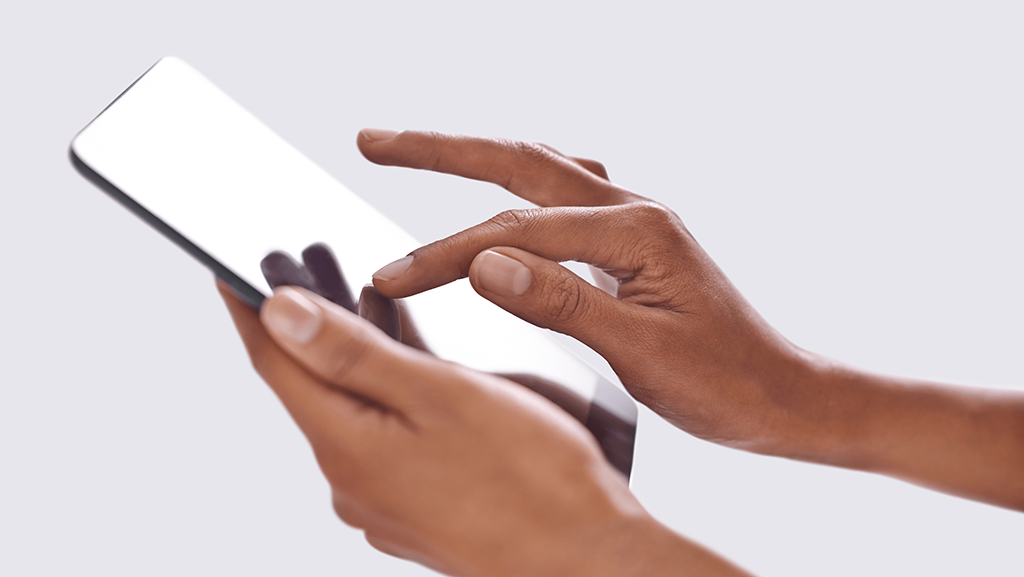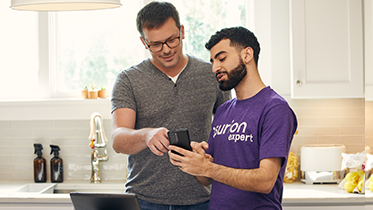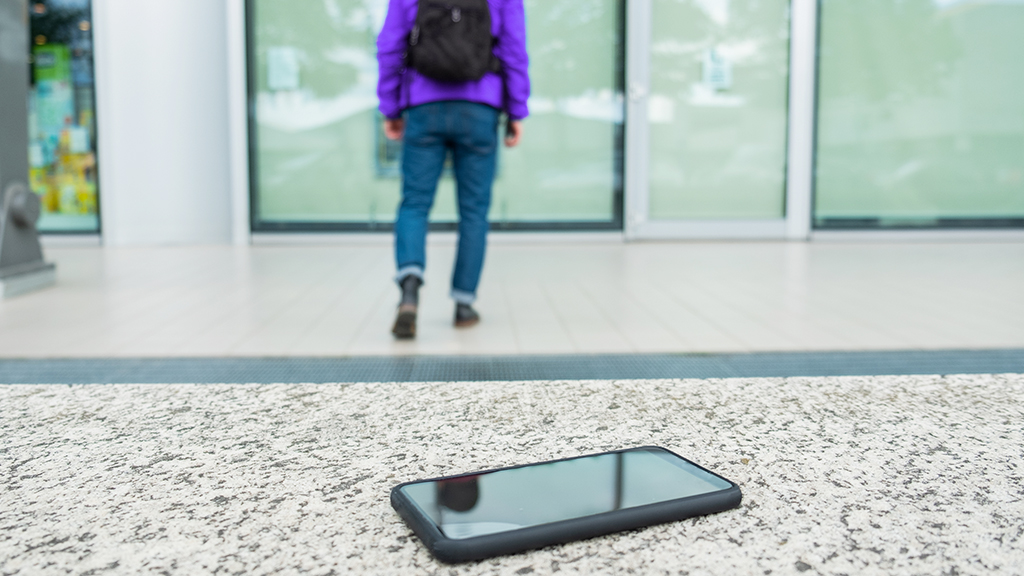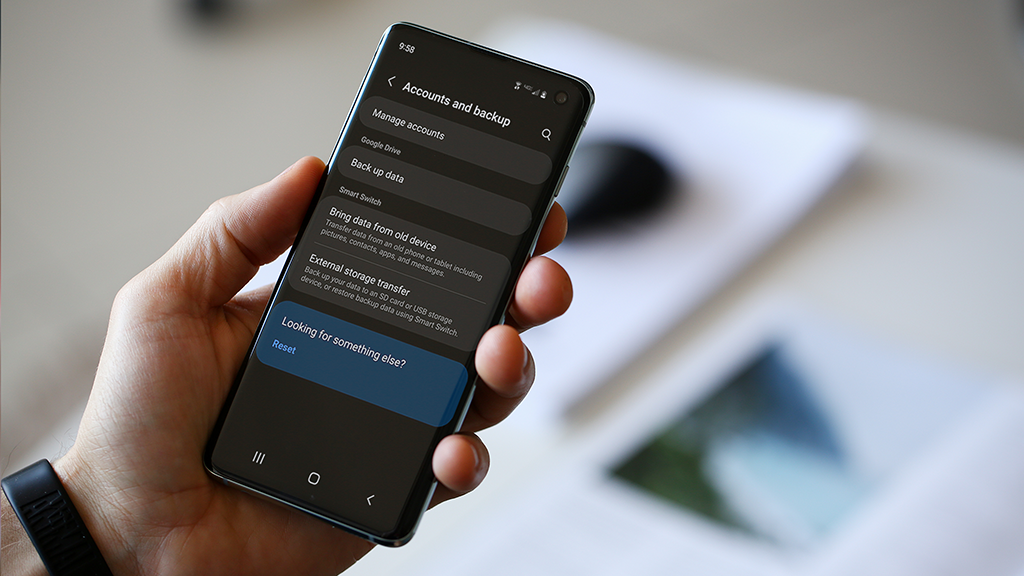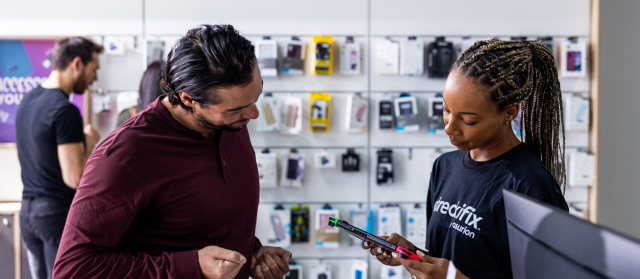Getting a brand-new phone is fun—from discovering its cool features to snapping that first pic. But before you get too excited, make sure you back up your old phone and reset it to its factory settings. That way, you remove your personal information from the device.
At Asurion, our experts help millions of customers get the most out of their favorite tech every day, from setting up new phones to fixing broken or cracked screens. Here are their answers to frequently asked questions on how to reset your phone to factory settings and tips for resetting your device without losing important data.
Why would you need to factory reset your phone?
There are several reasons to restore your phone to factory settings, such as:
- Selling your phone
- Trading it in for a new device
- Passing your phone on to a family member or friend
- To troubleshoot performance issues, such as a frozen device or forgotten passcode—our experts only recommend this as a last resort, after you've tried everything else.
Restoring your phone to its default settings means starting from scratch and is important to do in order to keep your personal information protected.
Does a factory reset delete everything?
When you do a factory reset on your iPhone® or Android™ device, nearly all data on your phone will be erased. That's why it's important to make sure you're prepared to take such a big step.
What a factory reset deletes from your phone:
- Contacts
- Photos and videos
- Music
- Passwords and files
- Accounts
- Messages
What should I do before I reset my phone?
Before you restore your phone to factory settings, there are important steps to take to make sure you do not lose your existing data.
1. Back up your phone
The first thing you should do is back up your phone. Transferring your information to a new device or uploading it to a service like iCloud®, Google Drive™, or one offered by your phone carrier will ensure you don't lose everything during a factory reset.
2. Plug your phone in and connect to Wi-Fi
The backup process can be time-consuming. And it's best to save your files over a secure Wi-Fi connection, so you don't use up a lot of mobile data during the transfer. Once the backup is complete, you'll be able to restore your settings and information when you get a new device.
3. Know your login info to restore data after resetting
Before you reset your phone, make sure you know your login information. For iPhone users, your Apple® ID and password will let you access data stored in iCloud across your devices. And a Google® Account username and password is required to restore data after resetting an Android device. You can typically find both your Apple ID and Google Account in Settings.
4. Unpair your device and sign out of all accounts
A few additional steps you'll want to take to ensure all bits of your personal info are removed from your device:
- Unpair or disconnect Bluetooth® devices like your smartwatch or wireless headphones.
- Sign out of all apps, services, and email accounts.
- Turn off Find My iPhone®, Find My Device, or Find My Mobile.
- Delete cards from your mobile wallet.
- Remove your SIM card or deactivate your eSIM.
5. Sign out of your phone
After backing up your data and completing the checklist above, don't forget to sign out of your phone too. Although a factory reset removes all the information stored on the device, this will ensure no one can access your account after you sell or trade in your phone for another one.
Now you know what to do before you get started, we'll go into the steps on how to factory reset your iPhone and your Android phone. If you find you need help along the way, stop by the nearest uBreakiFix® by Asurion store.

Keep your phone working the way it should
Our trusted experts can fix your phone as soon as the same day. Schedule a repair or visit your nearest store today.
How to factory reset your iPhone
There are a few different ways to reset your iPhone, but the easiest one is through Settings.
- Open Settings, then tap General > Reset.
- Tap Erase All Content and Settings. You may have to enter your passcode or Apple ID and password to confirm your decision.
- Tap Erase iPhone.
Your iPhone's screen will go dark, and you may have to wait a few minutes for it to fully erase. When you see the device turn back on, the factory reset will be complete. If you'd now like to put your information back on your device, check out our guide to how to restore your iPhone backup.
How to factory reset your iPhone without the passcode
Forgot your iPhone's passcode? We've all been there. But be careful: If you enter the numbers incorrectly too many times, the device will be disabled and you'll be forced to do a factory reset just to unlock it. For iPhone X and later models, our experts recommend doing the following.
To reset a locked iPhone:
- If your iPhone is connected to a computer, disconnect it.
- Press and hold one of the volume buttons and the Side button until you see the power off slider. Then drag the slider to the right and turn off your phone.
- Hold the Side button and connect your iPhone to a computer. When you see the recovery mode screen, release the Side button.
If you backed up your phone before you got locked out, you should be able to restore your data after you remove the passcode. If you didn't back up your phone, your data won't be saved.
How to factory reset your Android phone
For an Android device, you can usually perform a factory reset in Settings, but it can take up to an hour to complete. Make sure your phone is plugged in while you're going through the process.
How to reset a Samsung Galaxy:
- Open Settings, then tap General management > Reset.
- Tap Factory Data Reset > Reset > Delete all.
For other Android models, you can use Search to reset your phone to its original settings.
- Open Settings, then search “Reset."
- Tap Erase all data (factory reset) in the results. Tap Erase all data (factory reset) if prompted again, then enter your password or PIN to confirm your decision.
How to factory reset your Android phone when locked
If you can't remember the PIN, password, or pattern to unlock your phone, you may be forced to reset it. Try our experts' tips for resetting Samsung Galaxy S8 and newer phones.
To reset a locked Android phone:
- Turn off the phone if it doesn't require a PIN to do so. You may have to wait until it runs out of battery and turns off on its own.
- Press and hold the Volume Up, Power, and Bixby® buttons simultaneously until your phone vibrates and the Samsung® logo appears.
- When the Recovery menu appears, press the Volume buttons to select “Delete all user data" or "Wipe data/factory reset." Then press the Power button to make your selection.
- Use the Volume buttons again to confirm “Yes" or “Factory data reset," then press the Power button to select it.
- Once your phone processes the factory reset, you may see the message “Data wipe complete" at the bottom of your screen. Press the Power button one last time to select the option “Reboot device."
Your Samsung phone will reset and power back on automatically when it's time to set it up.
If you've tried these steps and still need a little help, we're right around the corner. Schedule a repair at the nearest uBreakiFix® by Asurion store and our certified experts can get your device back up and running as soon as the same day.
